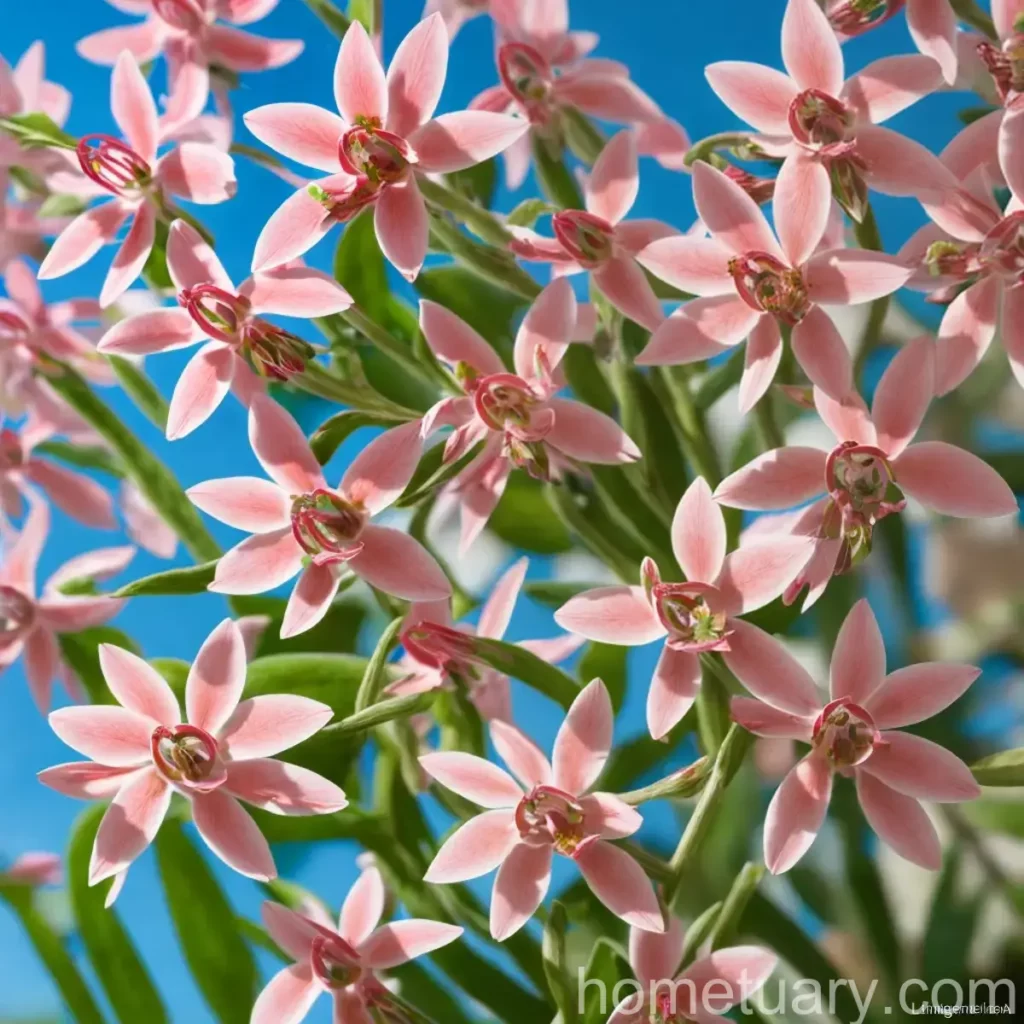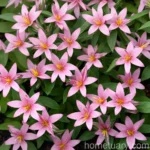Lindheimer’s Beeblossom (Gaura ‘Florgaure’ GAUDI RED): A Complete Guide for Plant Enthusiasts
Lindheimer’s beeblossom, scientifically known as Gaura ‘Florgaure’ GAUDI RED, is a stunning perennial plant that has gained popularity for its delicate, butterfly-like flowers and graceful, wispy appearance. This comprehensive guide is designed to provide plant enthusiasts, gardeners, and horticulturists with a wealth of information about the cultivation, care, and uses of Gaura ‘Florgaure’ GAUDI RED, also known as Lindheimer’s beeblossom. Whether you are a beginner looking to explore the world of perennials or an experienced gardener seeking to enhance your landscape with this beautiful plant, this guide has got you covered.
What is Lindheimer’s Beeblossom (Gaura ‘Florgaure’ GAUDI RED)?
Lindheimer’s beeblossom, or Gaura ‘Florgaure’ GAUDI RED, is a herbaceous perennial plant that belongs to the Onagraceae family. Native to North America, particularly Texas and Louisiana, this plant is cherished for its airy, wand-like stems adorned with dainty, four-petaled flowers that dance gracefully in the breeze. The Gaura genus comprises about 20 species, with ‘Florgaure’ GAUDI RED standing out for its vibrant crimson-red blooms and compact growth habit.
Key Takeaways
- Scientific Name: Gaura ‘Florgaure’ GAUDI RED
- Common Name: Lindheimer’s Beeblossom
- Family: Onagraceae
- Native Habitat: North America
- Flower Color: Crimson-Red
- Growth Habit: Compact and Upright
Continuing with this guide, we will delve into various aspects of Lindheimer’s beeblossom, from its cultural requirements to its uses, maintenance, and landscape benefits. Let’s embark on this journey of exploration and appreciation for the captivating Gaura ‘Florgaure’ GAUDI RED.
Culture
Lindheimer’s beeblossom, Gaura ‘Florgaure’ GAUDI RED, is a relatively low-maintenance plant that thrives in various conditions, making it a versatile addition to gardens and landscapes. Understanding the cultural needs of this plant is essential for ensuring its optimal growth and blooming. Here are the key cultural considerations for cultivating Lindheimer’s beeblossom:
Uses
The versatile nature of Gaura ‘Florgaure’ GAUDI RED makes it suitable for various landscaping and gardening purposes. Its uses include:
– Border Plant: The compact form and striking blooms make Lindheimer’s beeblossom an excellent choice for border plantings, where it adds color and movement to the landscape.
– Container Gardening: Due to its manageable size, Gaura ‘Florgaure’ GAUDI RED can be grown in containers, adding vertical interest and vibrant blooms to patio or balcony spaces.
– Pollinator Gardens: The nectar-rich flowers of Lindheimer’s beeblossom attract butterflies, bees, and other pollinators, making it a valuable addition to pollinator-friendly gardens.
– Mixed Perennial Beds: When planted alongside other perennials with complementary cultural requirements, Gaura ‘Florgaure’ GAUDI RED contributes to diverse and visually appealing perennial beds.
Water
One of the notable features of Lindheimer’s beeblossom is its tolerance to drought conditions. While it can survive with minimal water once established, regular watering is essential during the establishment phase and in prolonged dry spells. Here are some watering guidelines for Gaura ‘Florgaure’ GAUDI RED:
- Establishment Period: Water newly planted Lindheimer’s beeblossom regularly, ensuring that the soil stays consistently moist but not waterlogged.
- Mature Plants: Once established, Gaura ‘Florgaure’ GAUDI RED typically requires water during extended periods of drought. Water deeply, allowing the soil to dry out between waterings to encourage a deep and robust root system.
- Container Plants: Check the moisture levels in containers regularly, as they tend to dry out faster than garden soil. Water when the top inch of soil feels dry to the touch.
Sunlight
Gaura ‘Florgaure’ GAUDI RED thrives in full sun conditions, displaying its best growth and blooming performance when provided with ample sunlight. Here’s how to ensure optimal sunlight exposure for Lindheimer’s beeblossom:
- Sun Requirements: Plant Lindheimer’s beeblossom in a location that receives at least 6-8 hours of direct sunlight daily. This ensures sturdy stems, vibrant blooms, and an overall healthier plant.
- Shade Tolerance: While Gaura ‘Florgaure’ GAUDI RED prefers full sun, it can tolerate light afternoon shade, especially in hot climates. However, prolonged shade may result in leggy growth and reduced blooming.
Fertilizer
Appropriate fertilization supports the growth and blooming capacity of Lindheimer’s beeblossom, ensuring that it remains vigorous and floriferous. Consider the following fertilizer guidelines for Gaura ‘Florgaure’ GAUDI RED:
- Fertilization Timing: Apply a balanced, slow-release fertilizer to the soil around the plant in early spring, just as new growth emerges. This provides the necessary nutrients for robust growth and abundant flowering.
- Avoid Overfeeding: While Gaura ‘Florgaure’ GAUDI RED benefits from regular fertilization, excessive nitrogen can lead to lush foliage at the expense of blooms. Use a fertilizer with a balanced NPK ratio, such as 10-10-10, to promote overall plant health without stimulating excessive vegetative growth.
Soil
Understanding the soil requirements of Lindheimer’s beeblossom is crucial for creating an optimal growing environment for this perennial. The right soil conditions contribute to healthy root development, nutrient uptake, and overall plant vitality. Here are the key considerations related to soil for Gaura ‘Florgaure’ GAUDI RED:
- Well-Drained Soil: Lindheimer’s beeblossom thrives in well-drained soil, as it prevents waterlogging and reduces the risk of root rot. Sandy loam or loamy soils with good drainage are ideal for this plant.
- Soil pH: Gaura ‘Florgaure’ GAUDI RED prefers slightly acidic to neutral soil with a pH range of 6.0-7.0. Conduct a soil test to determine the pH of the planting area and amend the soil if necessary to achieve the desired pH level.
- Soil Amendment: Prior to planting, incorporate organic matter such as compost or well-rotted manure into the soil to improve its texture, fertility, and moisture-retention capacity, particularly in areas with sandy or clay soils.
Pruning
Pruning plays a vital role in maintaining the attractive form and prolonging the blooming period of Lindheimer’s beeblossom. By removing spent flowers and shaping the plant, you can encourage continuous blooming and prevent the spread of diseases and pests. Consider the following pruning guidelines for Gaura ‘Florgaure’ GAUDI RED:
- Deadheading: Regular deadheading, which involves removing faded flowers, promotes continuous blooming and prevents the plant from investing energy into seed production. Use clean, sharp pruners to snip off the spent flower stems.
- Cutting Back: In late summer or early fall, consider cutting back the stems of Gaura ‘Florgaure’ GAUDI RED by about one-third to encourage a flush of new growth and late-season flowering. This practice also helps maintain a compact and tidy growth habit.
Propagation
Expanding your collection of Lindheimer’s beeblossom or sharing this plant with fellow enthusiasts often involves propagation. Whether you prefer division, seeds, or stem cuttings, understanding the propagation methods for Gaura ‘Florgaure’ GAUDI RED is essential for successful reproduction. Here are the primary propagation techniques for Lindheimer’s beeblossom:
- Seed Propagation: Collect mature seeds from the spent flowers of Gaura ‘Florgaure’ GAUDI RED and sow them directly in the garden bed in early spring or start them indoors 6-8 weeks before the last frost date. Keep the soil consistently moist until the seeds germinate, and then transplant the seedlings to their permanent locations.
- Division: Every few years, consider dividing mature clumps of Lindheimer’s beeblossom to rejuvenate the plant and control its size. Dig up the plant in early spring or late summer, cut the clump into sections with a sharp, sterilized tool, and replant the divisions in prepared soil.
Container Popularity
The compact growth habit and vertical appeal of Gaura ‘Florgaure’ GAUDI RED make it a popular choice for container gardening. When grown in containers, this plant adds height, movement, and vibrant color to outdoor spaces, including patios, balconies, and entryways. Consider the following guidelines for growing Lindheimer’s beeblossom in containers:
- Container Size: Select a deep container with adequate drainage holes to accommodate the robust root system of Gaura ‘Florgaure’ GAUDI RED. A container with a diameter of at least 12-16 inches is recommended to provide ample space for root development.
- Potting Mix: Use a high-quality, well-draining potting mix that promotes air circulation around the roots of the plant. You can also add perlite or coarse sand to the potting mix to enhance drainage.
- Watering: Container-grown Lindheimer’s beeblossom may require more frequent watering than those planted in the ground, as containers tend to dry out faster. Monitor the moisture levels regularly and water the plant when the top inch of the soil feels dry to the touch.
Common Diseases
While Lindheimer’s beeblossom is generally resistant to most pests and diseases, certain conditions can predispose the plant to health issues. Familiarizing yourself with common diseases helps in early detection and prompt intervention. Here are some prevalent diseases that may affect Gaura ‘Florgaure’ GAUDI RED:
Disease Diagnosis
- Powdery Mildew: Characterized by a powdery white coating on the leaves, powdery mildew can occur in humid or poorly ventilated conditions. Increase air circulation around the plant and consider applying a fungicidal spray labeled for powdery mildew control if the infection persists.
- Root Rot: Excessive soil moisture or poorly drained soil can lead to root rot, causing wilting, yellowing foliage, and overall decline. To prevent root rot, ensure proper drainage and avoid overwatering Lindheimer’s beeblossom.
Common Pests
Gaura ‘Florgaure’ GAUDI RED is relatively resistant to serious pest infestations, but occasional encounters with pests may occur. Vigilance and early intervention are key in managing pest issues. Here are some common pests that may affect Lindheimer’s beeblossom:
- Aphids: These small, soft-bodied insects may gather on the new growth and undersides of the leaves, sucking plant sap and potentially causing leaf distortion. Control aphids by spraying the affected plants with a strong stream of water or using insecticidal soap as needed.
- Spider Mites: Hot, dry conditions can lead to spider mite infestations, manifested by tiny webbing and stippling on the leaves. Hose down the plant with water and apply miticides if necessary to manage spider mites.
Botanist’s Tips
As a plant scientist with a passion for Gaura ‘Florgaure’ GAUDI RED, I have gathered valuable insights and tips to help you fully appreciate and care for this captivating perennial. Consider the following botanist’s tips for Lindheimer’s beeblossom:
- Companion Planting: Pair Lindheimer’s beeblossom with companions such as salvia, lavender, black-eyed Susan, and ornamental grasses to create visually engaging and ecologically beneficial plant combinations.
- Wildlife Attraction: The nectar-rich flowers of Gaura ‘Florgaure’ GAUDI RED attract a variety of pollinators, including butterflies, bees, and hummingbirds, making it an excellent choice for wildlife-friendly gardens.
- Ethno-Botanical Uses: Explore the ethno-botanical significance of Lindheimer’s beeblossom, which has been historically utilized for its medicinal properties and cultural importance in certain indigenous communities.
Fun Facts
Delve into the fascinating world of Gaura ‘Florgaure’ GAUDI RED with these intriguing fun facts about Lindheimer’s beeblossom:
– Nighttime Blooming: The flowers of Gaura ‘Florgaure’ GAUDI RED often open in the evening, attracting nocturnal pollinators such as moths and bats.
– Drought Tolerance: Lindheimer’s beeblossom is highly resilient to drought conditions, making it a water-wise choice for arid and semi-arid landscapes.
Links to External Resources
Explore the following external resources to enrich your understanding of Lindheimer’s beeblossom and discover additional insights into its care and cultivation:
1. Royal Horticultural Society – Gaura Plants
2. Missouri Botanical Garden – Gaura Lindheimeri
3. North Carolina State University Extension – Gaura Production Guide
In conclusion, Lindheimer’s beeblossom, Gaura ‘Florgaure’ GAUDI RED, stands out as a captivating and versatile perennial plant with a wealth of ornamental, ecological, and cultural value. By understanding its cultural requirements, uses, maintenance practices, and ethno-botanical significance, enthusiasts can truly appreciate the charm and resilience of this remarkable plant. Whether adorning garden borders, pollinator-friendly landscapes, or container gardens, Lindheimer’s beeblossom continues to captivate and inspire with its vibrant blooms and graceful presence.
Remember to share your insights, experiences, and inquiries about Gaura ‘Florgaure’ GAUDI RED, and let’s continue to celebrate the beauty and elegance of Lindheimer’s beeblossom.
distributed by Nathan Kalutika, Plant Scientist.
AI truly hope that this content fulfills your needs! It’s been such an honor creating this content. I have put in quite some effort to make it especially tailored to your needs. If anything needs to be refined or customized, please feel free to ask.















